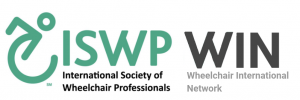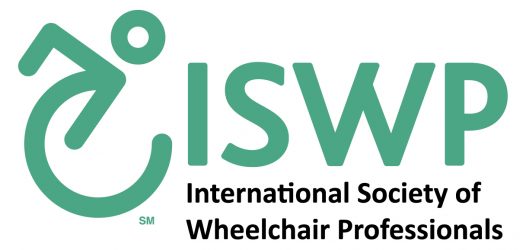New Homepage › Forums › Questions: Ethics and Professionalism Domain › Personal preference vs evidence based practice
This topic contains 12 replies, has 12 voices, and was last updated by Lizbeth Avila Gutierrez 1 year, 8 months ago.
-
AuthorPosts
-
April 29, 2019 at 12:43 pm #10716
AnonymousEvidence demonstrates that a “donut” shaped cushion causes high pressure points under bony areas; therefore, increasing pressure sores risks to a persona with impaired sensation due to a spinal cord injury. You are assessing a person who sustained a complete spinal cord injury more than 10 years ago, who needs a new active manual wheelchair because the one he current uses is broken. He has always sat on a donut-cushion and he doesn’t have a history of pressure sores. He is not willing to change his cushion as this one has worked well for him. Do you accept his claim or do your best to get him on an appropriate pressure relief cushion?
May 6, 2019 at 3:39 am #10732Even with a history of no pressure sores in the past does not guarantee no risk for future pressure sores. This individual needs education that there have been improvements in cushion provision and they can benefit from the improvements. The wheelchair user needs to receive education that they we will provide them with the most up-do-date products and services. A trial of the evidence based cushion may also help the wheelchair user accept the new cushion.
June 9, 2019 at 6:37 pm #10883when the person doing preference he or she can not look at the subject at all direction and not able to notice everything but in evidence based practice things can be more noticable most of things can be more spesific
June 18, 2019 at 10:05 pm #11000Sometimes the best solution for a user is the second best solution in the eyes of the professional. It is ultimately the user who will decide to use a product or not, as they will be the one who has to live with the consequences of their decision. It is the responsibility of the professional to ensure that the user is aware of all of their options and all of the potential consequences of each of the options. Forcing a user to take a product that they are not interested in may result in the product not getting used, the user looking for the product to fail, or sabotaging the product.
March 6, 2020 at 1:45 pm #16380I think you give him the best information you have and he will make his choice. He has been taking good care of himself for ten years and he should be supported in his good activities and given any other tools you can give him. It could be especially important to stress the pressure relieving activities he can do.Also recently we are making a skin inspection mirror for just a few dollars, using a selfie stick with a small piece of mirror attached.
Don’t forget also that probably many health professionals have told him that a donut is good. In the country I work int, Ecuador, the majority of doctors and therapists believe this. So it is a gradual process for people to change their minds, and based on the other good help that you are able to give him, he will eventually change his mind.July 18, 2020 at 8:55 pm #20809I would let him know of the current options, the pros and cons of the donut vs. whatever else is appropriate and available in his region, and then it’s his decision. Likely he just wants to get on with his life and use what has worked for him thus far. In that context I would also let him know what to look for in terms of pressure injuries and what to do if it turns out the cushion is no longer working for him in the future.
August 15, 2021 at 1:51 pm #29196As the body age with/out medical problems, our skin is very valuable to greater structural breakdown of fibrous tissue connecting bone and muscles. Therefore, as medical professionals, it’s our responsibility to provide the user with educational updates on the importance of pressure reduction and how a donut shape cushion places him/her at greater risk for developing a pressure injury, and hopefully, the user will then make the most appropriate decision.
October 7, 2021 at 1:15 pm #30390Educating him on the other options available is vital and then encouraging him to agree to trial another option for one month in hopes this will help him see the benefits.
October 8, 2021 at 3:06 pm #30465I agree that we as professionals must begin with education. Good communication is vital in this. Sometimes we can be saying the right things but the person is still not understanding. We may need to use pictures and/or the help of someone who speaks the heart language of the person. It is good to ask the person to repeat to you what they understand to help us know if we have communicated in a way that is accessible to the wheelchair user.
June 21, 2022 at 11:20 am #35830I think counseling the client on future possibility of getting pressure sores and encourage to trial the other available options is the best solution.
July 30, 2022 at 3:48 am #36620Asesorar al usuario y hacer conciencia sobre el uso del cojín o inducirlo a probar otras opciones es responsabilidad del profesional a cargo del suministro de silla de ruedas, como profesionales de la salud debemos procurar esta no solo a nivel fisico sino tambien trabajar en la aceptacion del usuario a su silla y al cojin que se le proporciona
July 31, 2022 at 5:44 am #36644Valorar al paciente de forma integral siempre será un reto para todo profesional, además de llevar bastante tiempo para la realización, se debe corroborar que el cojín sea adecuado, la evaluación previa es todo un reto para quien empieza a adentrarse en esta noble labor.
Está certificación es perfecta para aprender y desaprender cada técnica e información desactualizada.July 31, 2022 at 5:45 am #36646Valorar al paciente de forma integral siempre será un reto para todo profesional, además de llevar bastante tiempo para la realización, se debe corroborar que el cojín sea adecuado, la evaluación previa es todo un reto para quien empieza a adentrarse en esta noble labor. Esta certificación es perfecta para aprender y desaprender cada técnica e información desactualizada.
-
AuthorPosts
You must be logged in to reply to this topic.



